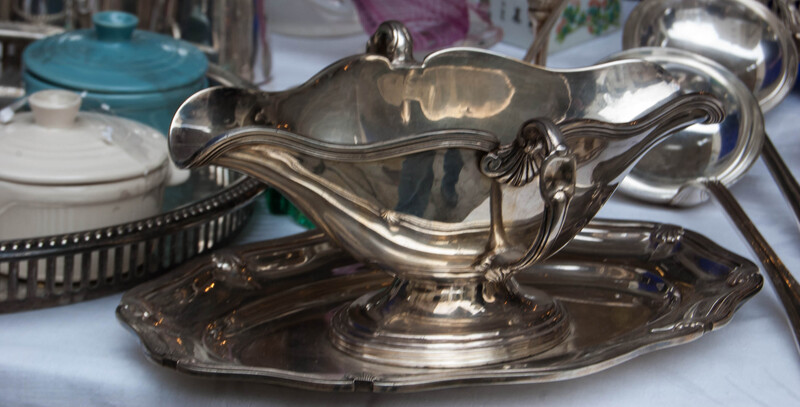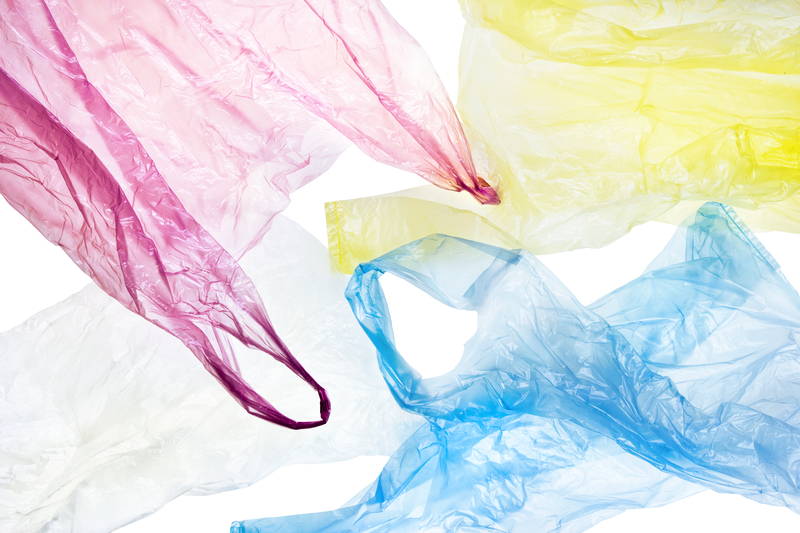The Minimalist Path to a Clutter-Free and Serene Environment
Minimalism isn't just about owning fewer possessions; it's a lifestyle that fosters tranquility and intentionality. As modern living becomes increasingly fast-paced and consumer-centric, more individuals are gravitating toward the minimalist path to a clutter-free and serene environment. This comprehensive guide explores how embracing minimalism can transform your home--and your life--by creating peaceful, organized, and refreshing spaces.
What is Minimalism?
At its core, minimalism is the practice of living with only what you truly need and value. It's about shedding excess--be it physical, mental, or emotional clutter--to pave the way for more meaningful experiences and surroundings. The minimalist lifestyle encourages quality over quantity, simplicity over chaos, and mindfulness over impulsiveness.
Key Principles of Minimalism
- Simplicity: Strive to keep life uncomplicated by decluttering your home and habits.
- Intentionality: Mindfully choose possessions, relationships, and commitments that add value.
- Functionality: Every item should serve a purpose or bring genuine joy.
- Serenity: Create environments that nurture calmness and promote well-being.

Benefits of a Minimalist, Clutter-Free Home
The minimalist journey has far-reaching benefits that go beyond a tidy living room. Here's what you can expect:
-
Less Stress & More Peace:
Visual clutter leads to mental clutter. By reducing excess, you'll find it easier to relax and concentrate. -
Increased Productivity:
A simplified environment makes it easier to focus on essential tasks, boosting efficiency. -
Time and Money Saved:
Maintaining fewer possessions gives you more time for relationships, hobbies, or rest--and prevents unnecessary spending. -
Sustainable Living:
The minimalist path naturally aligns with eco-friendliness by curbing consumption and reducing waste. -
Improved Well-Being:
Minimalist homes tend to be cleaner, brighter, and more welcoming, enhancing physical and emotional health.
How To Begin Your Minimalist Path to a Serene Environment
Adopting the minimalist lifestyle and cultivating a clutter-free home is a journey, not a destination. Here's how you can get started:
Reflect on Your Intentions
Minimalism begins with introspection. Ask yourself: Why do I want a clutter-free and serene environment? Clarifying your goals--such as reducing stress, saving money, or living more sustainably--will help you stay motivated.
Start with Small, Manageable Changes
Rome wasn't built in a day, and neither is a minimalist home. Begin with one area, such as your wardrobe or a kitchen drawer, before moving on to larger spaces. Gradual progress prevents overwhelm and fosters sustainable changes.
- Declutter by category (clothes, books, documents, etc.) rather than by room
- Set aside 10-15 minutes daily for tidying and organizing
- Celebrate small wins to maintain momentum
The Decluttering Process
- Sort and Assess: Empty a particular space and sort items into categories--keep, donate, recycle, or dispose.
- Ask the Right Questions: For each item, consider: Do I use this regularly? Does it add value or joy to my life?
- Let Go Gracefully: Release sentimental attachment to items you no longer need. Focus on the positive impact of freedom from clutter.
- Organize Mindfully: Arrange remaining possessions by utility and frequency of use. Storage solutions should also be simple and accessible.
Room-by-Room Guide to Creating a Minimalist Oasis
Your Minimalist Living Room
The living room is often the heart of the home, making it an excellent place to start your minimalist journey.
- Use multifunctional furniture--think storage ottomans, sofa beds, or nesting tables
- Maintain only essential decor and artwork for a sense of spaciousness
- Hide electronics and remote controls in drawers or bins when not in use
- Incorporate natural light and a neutral color palette for a soothing effect
Minimalist Kitchen Practices
A clutter-free kitchen streamlines cooking and meal prep, making it easier to enjoy healthy eating:
- Reduce appliances and utensils to those you use daily or weekly
- Keep counters clear--store gadgets and ingredients inside cabinets or drawers
- Adopt a one-in, one-out rule for pantry items and tools
- Invest in stackable containers to maximize space and preserve food freshness
Serene Minimalist Bedrooms
A minimalist bedroom enhances restful sleep and relaxation.
- Use a simple, comfortable bed with minimal bedding
- Remove unnecessary furniture and gadgets from the room
- Store out-of-season clothes elsewhere to keep your closet tidy
- Choose blackout shades and soft lighting to promote calm
- Display just one or two pieces of meaningful decor
Minimalist Bathroom Organization
The bathroom is often overlooked, yet it's among the most used spaces.
- Edit down products to the essentials--quality over quantity
- Use drawer organizers, baskets, or shelves to keep items sorted
- Hang towels on hooks or bars, not piled on racks
- Keep surfaces clear for easier cleaning and a sleek appearance
Adopting Minimalism Beyond Physical Spaces
The minimalist path isn't limited to decluttering your home--it can also extend to your routines, relationships, and digital life.
-
Digital Decluttering:
Periodically organize files, unsubscribe from unneeded emails, and only keep apps you truly use. -
Simplify Your Schedule:
Be intentional with your commitments; prioritize experiences and connections that align with your values. -
Curate Relationships:
Surround yourself with uplifting people and let go of draining connections.
The Psychological Impact of Minimalist Living
Research suggests that a clutter-free environment lowers cortisol levels, reduces anxiety, and enhances creativity. Here's why:
- Orderly spaces give your mind a calm framework to function in.
- Less visual chaos makes it easier to focus and think creatively.
- Decluttering is empowering--it reinforces your ability to make conscious decisions.
Engaging in the minimalist path to a serene environment can spark a lasting sense of freedom and self-control that permeates every aspect of your life.
Tips to Sustain a Minimalist Lifestyle
-
Regularly Re-evaluate:
Schedule time each season or month to review and declutter key areas. -
Buy Less, Choose Well:
Adopt the mantra, "fewer, better things." Invest in quality, versatile items over trendy purchases. -
Practice Gratitude:
Focusing on what you have curbs the impulse to acquire more. -
One In, One Out Rule:
For every new item you bring in, let go of another. -
Practice Mindful Consumption:
Question each prospective purchase: Do I truly need this? Will it enhance my life?
Overcoming Minimalist Challenges
It's normal to encounter obstacles on your minimalist journey. Common challenges include:
- Sentimental Attachments: Honor memories, but keep a small collection of meaningful mementos rather than storing everything.
-
Family and Roommate Dynamics:
Communicate your goals, model habits, and respect shared spaces to inspire positive change. -
Fear of Scarcity:
Recognize that abundance comes from contentment, not accumulation.
Frequently Asked Questions About Minimalist Living
Is minimalism about depriving myself?
Not at all! Minimalism is about filling your life with more of what matters by removing distractions. It's the pursuit of purpose and fulfillment, not deprivation.
Can families or shared households become minimalist?
Absolutely! Minimalism is adaptable. Involving your household can make it a bonding experience. Respect each person's pace and choices.
Does minimalism apply to decorating?
Yes. Minimalist decorating focuses on open spaces, light, and carefully chosen elements that evoke calm and beauty--rather than excess ornamentation.
How do I maintain a minimalist environment in the long term?
Cultivate daily habits like resetting rooms each evening, evaluating new purchases thoughtfully, and embracing contentment.

Resources for Minimalist Inspiration
- Books: "The Life-Changing Magic of Tidying Up" by Marie Kondo, "Essentialism: The Disciplined Pursuit of Less" by Greg McKeown
- Blogs: The Minimalists, Be More With Less, Zen Habits
- Documentaries: Minimalism: A Documentary About the Important Things
Embrace the Minimalist Path Today
Embarking on the minimalist path to a clutter-free and serene environment isn't about rigid rules or perfection. It's a personal journey--one that unlocks spaciousness in your home, clarity in your mind, and more time for activities and people who really matter. So start small; each intentional step will bring you closer to a peaceful, fulfilling lifestyle.
Transform your space, nurture your well-being, and discover the serene power of minimalist living.